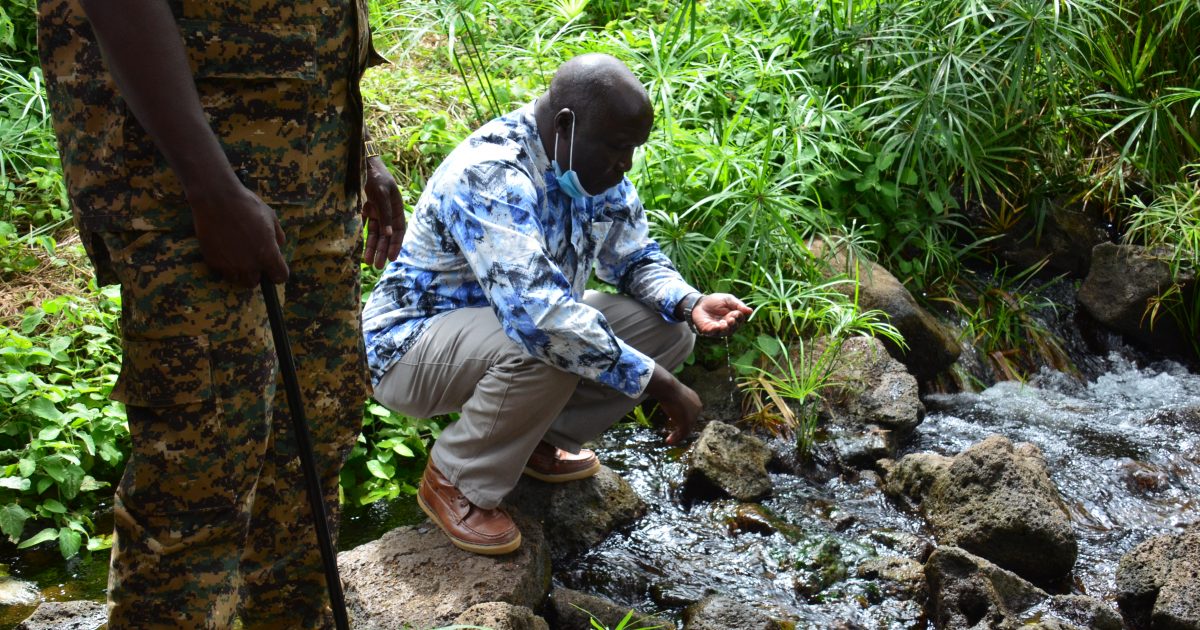From high in the air, the cones of the towering Chyullu Hills National Park straddling Tsavo and Makueni counties appear like a series of termite mounds painted dusky green. Closer to the ground, the green color turns into dense canopies of a thick forest that flow in one unbroken stretch from the tip of the hills to the ground. From there, the forest and the bush explodes in all directions, as far as the eye can reach.
Further North-West, towards the edges of the park, change starts to creep in. The hills fall back; the forest, trees and bush grow thin and eventually disappear. The lush vegetation is replaced by vast swathes of bare farmlands dotted with hundreds of homesteads. Occasionally, small clumps of isolated bushes pop up in the empty fields. This abrupt contrast between lush green vegetation and dry bare lands, almost side by side, is undoubtedly jarring.
This cleared land is the disputed Mikululo area that borders Chyullu Hills National Park and falls under Makueni County. It is characterized by surging human settlement with roads, churches and shopping centers being a common sight. The over 3,000 local residents occupying the land earn a living from farming, livestock keeping and trading.
Human activities on this land, estimated to be slightly over 42,000 acres, have become a source of mounting apprehension for Kenya Wildlife Service (KWS) and conservation experts who argue the degraded zone is a critical water catchment zone and the lifeblood for the Mzima Springs that serve most parts of the Coastal region with fresh water.

Experts warn that lack of timely intervention to mitigate against degradation at Mikululo and its environs will push Kenya closer to the verge of an ecological disaster.
“This is a vital water catchment area but has been degraded. The effects from such degradation are disastrous,” says Tsavo Conservation Area Assistant Director Mr. Robert Njue.
The early tell-tale signs of this looming environmental catastrophe are appearing many kilometers away at Mzima Springs in the heartlands of Tsavo West National Park. Considered one of the most iconic features in Tsavo West, Mzima springs has for decades gushed daily volumes of over 400-Million liters of ice-cold water from the natural storage that is a huge underground aquifer.
Amid the parched Tsavo environment, the springs create a breath-taking natural oasis with several clear pools which are homes to families of crocodiles, hippos and many species of fish. It is also an irresistible tourist attraction sight.
KWS now says water volumes discharged by Mzima Springs are falling. Tourists at the fish observatory center at Mzima’s main pool now view fish through the protective glass at the bottom. In the past, all layers of protective glasses used to be submerged in water.
“This is a reflection of what is happening at the source. The area is a water catchment zone for these springs,” said the Tsavo boss.
Degradation at Mkululo is blamed for this emerging crisis. For conservationists, their concerns are two-fold. It is not just the wildlife and delicate Tsavo Ecosystem that is imperiled by the decline in water levels. Mzima Springs continues to be a vital source of water for over four million people in four Coast counties namely Mombasa, Kwale, Kilifi and Taita-Taveta. Decline in water levels puts them at a great risk.
Data shows the springs discharge approximately 304,000 litres of water per minute. Mzima pipeline, which serves the four counties, has a daily carrying capacity of 35-million litres but carries less due to dilapidation of infrastructure.
To meet the water demands by the burgeoning population in the Coast region, the government plans to construct a bigger 220-km water pipeline dubbed as Mzima 2. According to an Environmental Impact Assessment (EIA) study in May 2018 for the Coast Water Services Board, the new pipeline will have a capacity of 105 million liters per day. The falling water levels might spell doom for such projects whose designs were based on sufficient water supplies.
Principal Secretary (PS) for State Department for Wildlife in the Ministry of Tourism and Wildlife Prof Fred Segor recently toured Mzima Springs and acknowledged the threat posed by dropping water volumes.
“Mzima springs remain a critical resource for Tsavo West National Park. It serves millions in the Coast region and any negative change in the water volumes becomes a concern not only because of what it portends to wildlife but also to human communities who depend on it,” he says.
He adds that in the designs for Mzima 2, there were specific watering points marked for wildlife in the park. He notes that there is an urgent need for inter-ministerial coordination to address challenges facing Mzima Springs.
The wildlife ministry, he said, would allocate funds to construct a fence around this critical resource as part of long-term plan to rehabilitate the iconic springs. Conservationists say amongst the ministries likely to come on board over this matter include wildlife, water, environment and forestry.
However, plans to rehabilitate this water catchment area faces a major hurdle. First, the land is home to thousands of farmers and herders who claim it to be their ancestral land.
In a February 2019 court ruling, the Environmental and Land Court in Machakos ruled that KWS had erred by extending the boundaries of Chyullu Hills National Park to include the disputed 42,000 acres at Mikululo without following due process. The case was filed in 1995 by residents living in the area through Mikululo Ranching and Co. Limited. They sued KWS, the Attorney General, then Makueni District Commissioner and Makueni County Government over attempts to take away their land.
Court records show KWS had made two boundary reviews; in 1991 and 1994, which resulted to addition of 9,720 hectares and 7,606 hectares respectively to Chyullu Hills National Park. These extensions brought the disputed 42,000 acres at Mikululo under the jurisdiction of the park. The court ordered the wildlife agency not to evict the residents.
KWS has filed an appeal to the ruling.
By Wagema Mwangi





